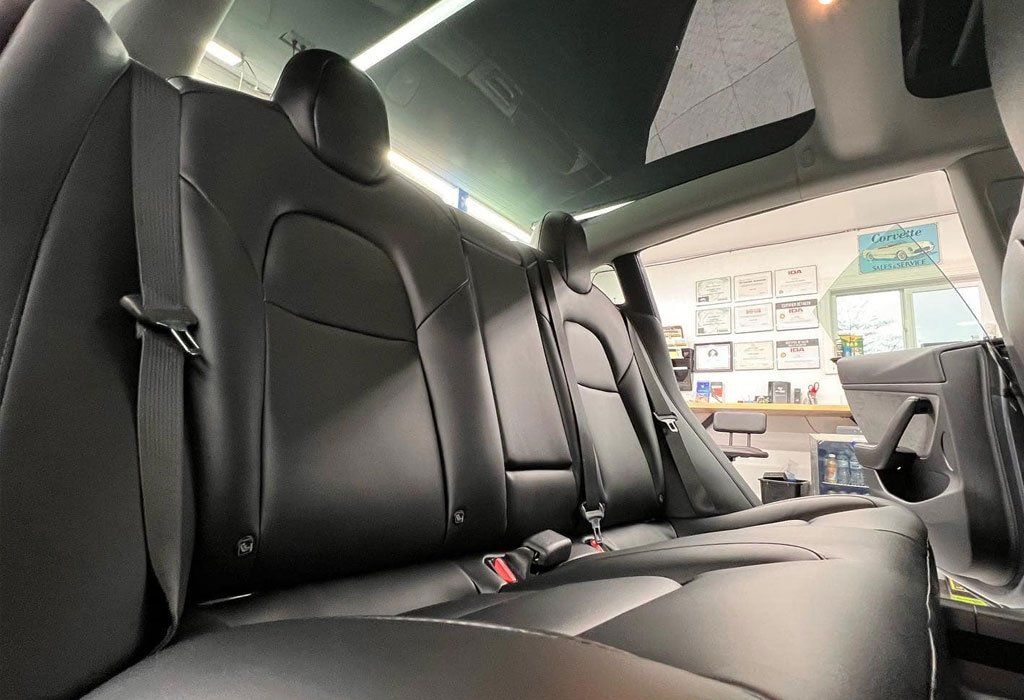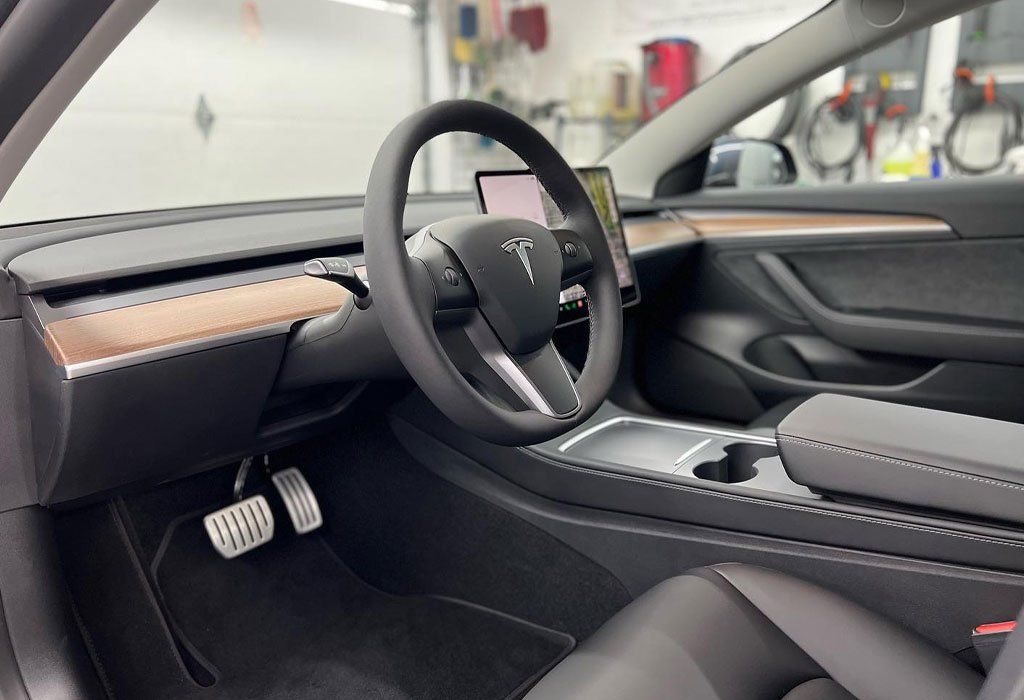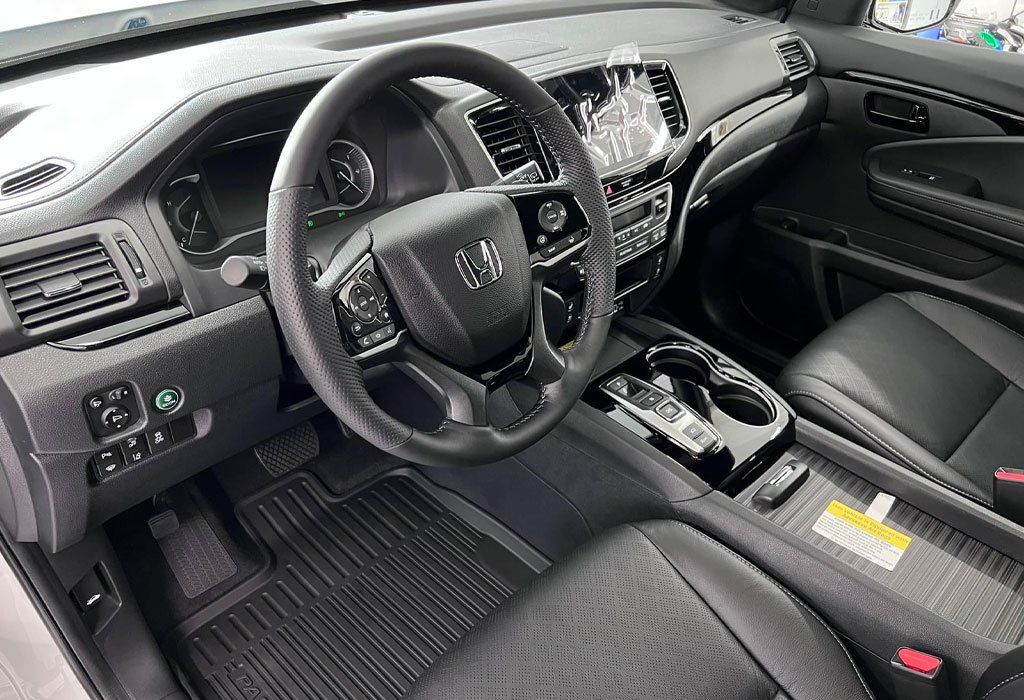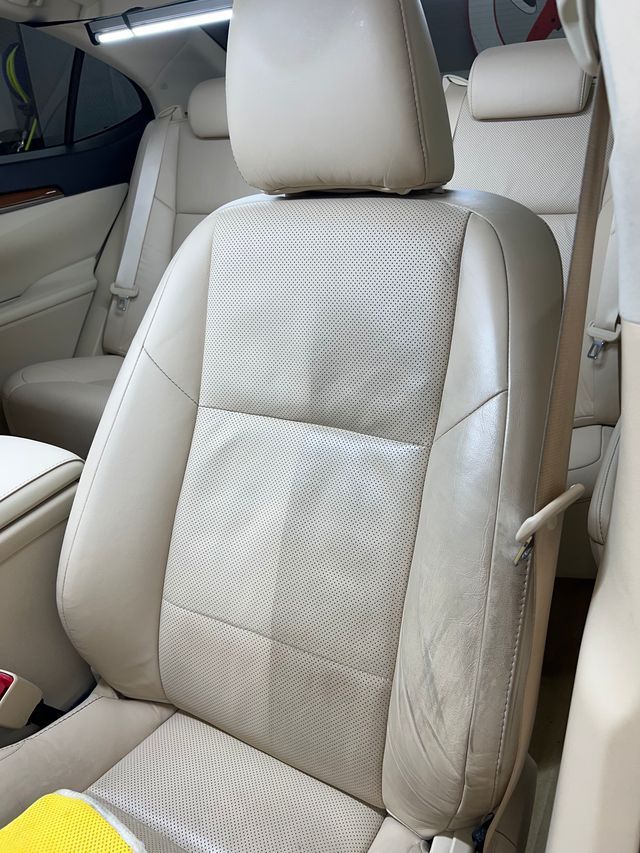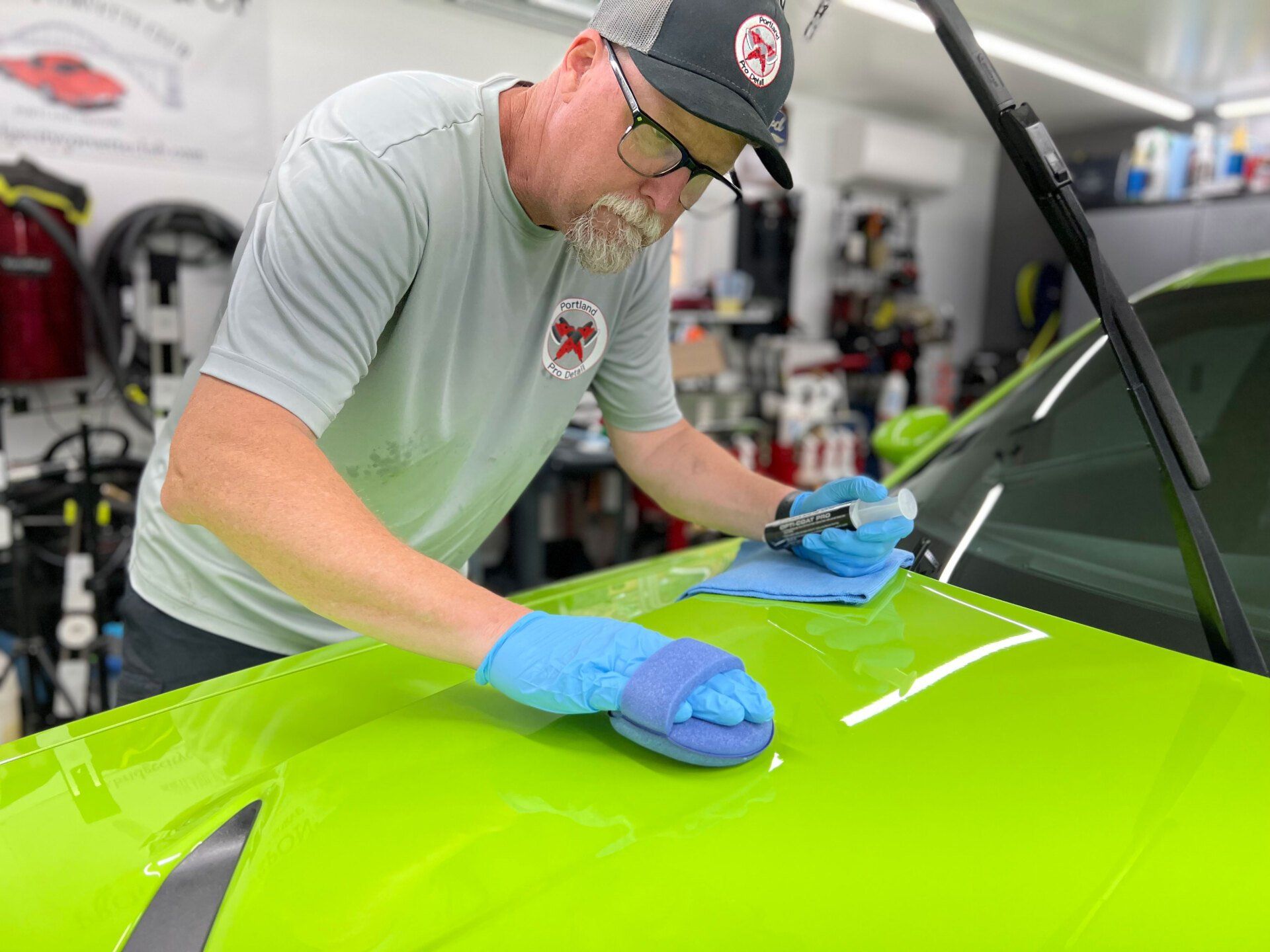Interior Ceramic Coating: Is It Safe for Heated and Ventilated Seats?
CALL (503) 444-7415
When it comes to keeping your car's interior looking fresh, heated and ventilated seats often bring up important questions about protective treatments. Many car owners seek both comfort and cleanliness but worry about how ceramic coatings might affect their seat features. This article explores the safety and effectiveness of using ceramic coatings on heated and ventilated seats, providing essential information to help you make an informed decision for your vehicle. Interior ceramic coatings can be safe for heated and ventilated seats when you choose products specifically designed for heat-sensitive materials. Proper application and professional consultation ensure both coating integrity and optimal seat performance.
Understanding Ceramic Coating Safety for Climate-Controlled Seats
The primary concern for vehicle owners considering ceramic coatings is whether these treatments will interfere with their seats' heating and cooling functions. Modern ceramic coating technology has advanced significantly, and these products are generally safe for heat-sensitive materials when properly formulated for automotive applications. The durability of ceramic coatings is impressive, as they typically withstand extremely high temperatures without degrading. Since heated seat systems usually operate within moderate temperature ranges, ceramic coatings provide an additional layer of protection while allowing seats to perform as intended. However, compatibility remains the key factor. Always verify that your chosen product explicitly states compatibility with heat-sensitive materials. Testing seat functionalities before application is crucial, as manufacturers implement these systems differently across various vehicle models. Beyond surface protection, ceramic coatings help reduce stains and maintain the appearance of leather or synthetic materials. This proactive maintenance can extend the lifespan of heated and ventilated components by shielding them from potential damage caused by spills or daily wear. The protective barrier also makes cleaning easier, reducing the likelihood of dirt settling in hard-to-reach areas.
Material Compatibility Considerations
Understanding how ceramic coatings interact with different seat materials is essential for successful application. Each material type requires specific consideration to ensure optimal results.
- Leather Seats: Leather seats equipped with heating and ventilation systems require ceramic coatings specifically formulated for leather. These specialized coatings maintain the natural flexibility and breathability of leather while providing lasting protection against dirt and wear. The coating must remain breathable to avoid restricting airflow, which could impact the ventilation system's effectiveness. Quality ceramic coatings act as a barrier against moisture and oils, significantly reducing absorption rates. This protection is particularly beneficial for maintaining leather's appearance and preventing deterioration over time.
- Fabric and Synthetic Materials: Synthetic leather and fabric seats respond differently to ceramic coating treatments. While synthetic materials often benefit from ceramic applications due to their durability, fabric seats require special attention. Fabric naturally attracts dust and debris more readily than hard surfaces, making proper product selection crucial. When treating fabric seats, ensure the ceramic coating won't leave residue that could become embedded in the material. Choose coatings specifically designed for textiles to maintain breathability and comfort while enhancing cleanliness and protection. Always use ceramic coating products that manufacturers guarantee are safe for your specific seat material type. This ensures no adverse reactions between the coating and your seat fabric or leather.
Advantages and Considerations of Interior Ceramic Coatings
- Benefits -Ceramic coatings offer long-lasting protection that can endure for several years, creating a durable barrier against wear and daily use. This protective shield guards against spills while fortifying upholstery from UV damage, reducing fading and deterioration while keeping your investment looking newer longer. Enhanced appearance is another significant advantage. Freshly coated seats often feature a glossy finish that improves aesthetic appeal, creating an attractive, well-maintained interior environment. The ease of cleaning cannot be overstated. A simple wipe with a damp microfiber cloth often removes dirt and stains from coated surfaces, making maintenance quick and effortless rather than a time-consuming chore.
- Important Considerations -Cost represents a significant factor, as high-quality ceramic coatings can be expensive depending on your vehicle's specifications and application location. Budget-conscious owners should factor this investment into their decision-making process. Application complexity requires attention, as ceramic coating application demands skill and precision to ensure proper coverage without affecting heated seat features. Improper application can limit effectiveness or create undesirable results. Ventilation impact deserves consideration, as incorrect application may clog ventilation pores in heated or ventilated seats. This could compromise the cooling comfort these seats are designed to provide, particularly during warmer months.
Best Practices for Application
Successful ceramic coating application requires careful attention to detail and proper technique. Following established best practices ensures optimal results and maintains seat functionality.
- Product Selection -Choose ceramic coatings specifically designed for automotive interiors and verify compatibility with heated and ventilated seats. Products not formulated for these specific applications may react negatively with seat materials or reduce system effectiveness.
- Surface Preparation -Thorough cleaning represents a critical step that cannot be overlooked. Use pH-neutral cleaners to remove all dirt, oils, and residues completely. This preparation ensures strong bonding between the ceramic coating and underlying material. Focus on every corner and seam, as even microscopic particles can impact overall performance.
- Application Technique -Apply the coating in a well-ventilated area where airborne dust won't settle on freshly treated surfaces. Use high-quality applicators with a soft touch to ensure consistent coverage across all areas. Pay special attention to ventilation holes, avoiding product buildup that could clog these openings and affect seat system performance.
- Curing Process -Allow proper cure time for maximum protection. Each product includes specific curing instructions, typically requiring around 24 hours before heat exposure is permissible. This waiting period ensures proper molecular bonding to form an effective protective layer. Rushing this step compromises installation efforts and coating effectiveness.
Alternative Protection Methods
Several other protective solutions are available if ceramic coatings seem unsuitable for your needs. High-quality seat covers provide popular protection against spills and daily wear, though they may sometimes obstruct heating and cooling features. Custom-fit covers designed specifically for your vehicle help maintain functionality while providing protection. Spray-on fabric protectors create barriers against stains and spills without interfering with ventilation capabilities. This allows you to enjoy heated or ventilated seat comfort while benefiting from added protection against daily mishaps. Select pH-neutral formulations that won't damage seat materials, and ensure compatibility with your specific seat type while following manufacturer instructions carefully.
Professional Recommendations
Automotive specialists recommend a cautious approach when applying ceramic coatings to heated and ventilated seats. Using these products sparingly helps maintain the functionality of sensitive materials and systems. Before applying any ceramic coating, conduct patch tests in inconspicuous areas to ensure no adverse reactions occur while determining how the coating affects texture and appearance. Thorough preparation using recommended cleaning solutions removes dirt and residues that could hinder proper adhesion. Focus on careful application techniques using specialized applicators that come with ceramic coating kits. These tools help achieve even coverage while preventing streaks or missed areas. Apply coatings in well-ventilated spaces to avoid inhaling potentially harmful vapors during the process. After application, allow adequate curing time to ensure seamless bonding with seat materials. Keep vehicles indoors for at least 24 hours post-application and avoid exposure to moisture or contaminants for optimal results. Regular maintenance using gentle pH-neutral products rather than aggressive cleaners helps preserve coating integrity over time. Routine inspections every few months help identify any wear before it becomes problematic.
Ceramic coatings can provide excellent protection for heated and ventilated seats when properly selected and applied. The key lies in choosing products specifically formulated for automotive interiors and heat-sensitive materials, followed by meticulous application and proper curing time. By understanding material compatibility, following best practices, and considering professional application, you can protect your investment while preserving the comfort features that make your driving experience enjoyable. Whether you choose ceramic coatings or alternative protection methods, the goal remains the same: maintaining both the appearance and functionality of your vehicle's interior for years to come.
Exceptional Ceramic Coating Services in Portland, OR
Portland Pro Detail in Portland, OR offers
premium interior ceramic coating services designed to protect every surface of your vehicle’s cabin. From leather seats and fabric upholstery to dashboards and door panels, our coatings create a durable barrier against spills, stains, UV rays, and daily wear. The result is a cleaner, fresher interior that’s easier to maintain and keeps its luxurious look for years to come.
Schedule your interior ceramic coating today
and give your vehicle the long-lasting protection it deserves!

